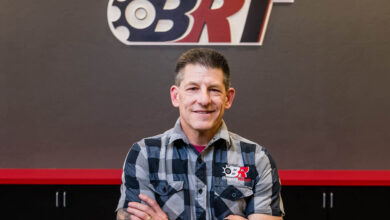
UArizona to be U.S. Space Command’s first Academic Engagement Enterprise Partner
The partnership will provide university faculty, students and other partners with a forum to collaboratively address pressing challenges of human security, exploration, development and settlement of space.
By Leslie Hawthorne Klingler, Research, Innovation and Impact
The United States Space Command has selected the University of Arizona as the inaugural member of its new Academic Engagement Enterprise, designed to train the future workforce and increase research and innovation related to space and national security.
“With our long and well-established leadership and expertise in planetary science, astronomy, astrophysics and space technology, the University of Arizona is perfectly positioned to partner with and support the U.S. Space Command in many areas of research, operations and student engagement,” said University of Arizona President Robert C. Robbins. “It is an honor to be selected as the agency’s first academic partner.”
The United States Space Command, or USSPACECOM, established the Academic Engagement Enterprise, or AEE, on Sept. 1 to engage the future workforce, advance its space-applied research and innovation programming, expand space-focused academic partnerships, and increase dialogue between the agency and academia.
UArizona’s relationship with USSPACECOM will provide a forum for students, faculty and university partners to collaboratively address pressing challenges in human security, exploration, development and settlement of space.
“U.S. Space Command recognizes the incredible collaborative and mutually beneficial partnership opportunities the University of Arizona presents to our command and workforce,” said Col. Doug Drake, U.S. Space Command Chief of Training and Education. “With the full spectrum of space-science programs and degrees, the University of Arizona and its faculty provide an academic standard for others to emulate. We look forward to leveraging the University of Arizona’s scientific, technical and academic prowess in support of USSPACECOM as we meet our National Security and National Defense responsibilities.”
The United States relies heavily on its space assets, including GPS, weather forecasting and communication satellites to permit essential day-to-day activity, said Jekan Thanga, a UArizona associate professor of aerospace and mechanical engineering in the College of Engineering. The volume of space traffic is expected to increase with the introduction of mega-constellations, new space stations and on-orbit servicing facilities into cislunar space, which is the space between Earth and the moon. If not properly managed, the increased traffic could stifle future growth prospects and limit access to space.
“The expected wider expansion into space will require mastery in living and working within cislunar space,” Thanga said. “The university, through long experience-spanning space missions, technology and habitats, will be developing a multiprong education program and skillset that will equip USSPACECOM personnel tackle these challenges.”
Thanga will coordinate with the university’s various space-related entities to establish a formal, graduate-level program in space research, addressing needs identified by USSPACECOM.
“The University of Arizona has a rich history with NASA dating back to the 1960s, in which it has taken on some of the nation’s toughest space challenges and delivered proven results to NASA,” Thanga said. “In that same spirit, we seek to be problem solvers for the next wave of challenges that inevitably come with wider expansion into space.”
UArizona Senior Vice President for Academic Affairs and Provost Liesl Folks is scheduled to deliver the keynote address tomorrow at the USSPACECOM Academic Fair at West Point, NY.
“Space research has an important role at the University of Arizona and we strive to contribute to trailblazing progress in space,” Folks said. “Space research at the University of Arizona is about students and faculty working on the frontiers, making eye-opening new discoveries, and inventing new space technologies that can propel us to the four corners of the solar system and paving the way for the future.”
Several other space research and education efforts are underway at UArizona, including research on detecting, characterizing, and tracking objects between Earth and the moon; a NASA-funded ASTEROIDS laboratory integrating research with education to build a well-prepared science, engineering and technology workforce; and the National Science Foundation Center for Quantum Networks.
The National Science Foundation Higher Education Research and Development survey ranks UArizona No. 1 in astronomy and astrophysics and fifth in the physical sciences and NASA-funded activity.
UArizona also is one of the nation’s best universities for service members, according to the Military Times Best for Vets: Colleges 2022 ranking, released Sept. 6. UArizona rose to No. 8 overall, No. 6 among public universities and No. 1 in the West. This is the university’s highest position in this ranking and represents a six-spot increase from its overall position last year and a 44-spot leap from its inaugural appearance in the list in 2018.
“We are honored and delighted to offer our expertise,” said Elizabeth “Betsy” Cantwell, senior vice president of research and innovation at the University of Arizona. “Working jointly with USSPACECOM and collaborators within the AEE, we can ensure the future vitality of American national security and space operations.”
Pictured above – UArizona engineering faculty members Jekan Thanga (right) and Moe Momayez with a low-cost, rapidly designed, 3D-printed rover prototype used for testing a new generation of miniature sensors for applications in lunar mining. Thanga will coordinate with the university's various space-related entities to establish a formal, graduate-level program in space research addressing needs identified by U.S. Space Command as part of the agency’s new Academic Engagement Enterprise.Chris Richards/University of Arizona





